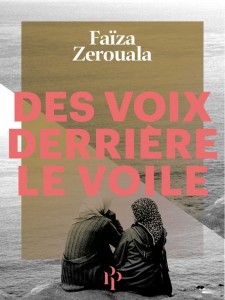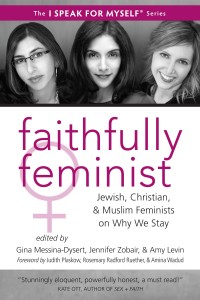Na’ima B. Robert’s second book, “Boy vs. Girl” is set in a South Asian community in Britain. The two main characters, Farhana and Faraz, are sixteen-year-old twins trying to negotiate their identities as the children of Pakistani immigrants and as Muslims. Robert attempts to tell the story of struggling with trying to find a sense of identity as a Muslim teenager.
 Farhana is perfect and ideal in every sense of the world. Not only is she described as looking like “Aishwarya Rai,” she is strong, independent, and wants more than what her parents want for her. Farhana’s conflicts were trivial, particularly in comparison to the conflicts that her brother faces. She considers, but faithfully rejects, the temptation of dating the elusively hunky Malik, and struggles with the hardships of wearing hijab for the first time. Her twin brother on the other hand, Faraz, is not as intellectually and socially gifted as his sister, and is being tempted by getting wrapped up in gang and drug warfare.
Farhana is perfect and ideal in every sense of the world. Not only is she described as looking like “Aishwarya Rai,” she is strong, independent, and wants more than what her parents want for her. Farhana’s conflicts were trivial, particularly in comparison to the conflicts that her brother faces. She considers, but faithfully rejects, the temptation of dating the elusively hunky Malik, and struggles with the hardships of wearing hijab for the first time. Her twin brother on the other hand, Faraz, is not as intellectually and socially gifted as his sister, and is being tempted by getting wrapped up in gang and drug warfare.
Robert’s main focus is being critical of a “cultural” version of Islam. The central vehicle for this is Najma, the aunt of the twins that wears niqab, but rebels against the family and community by being religious in a “pure” way, and stirs family drama over her desire to marry a non-Pakistani convert. Robert views culture as what holds Farhana back, rather than her family being religious in the orthodox sense of the word.
While the conflict between changing cultures is a reality that I could definitely relate to, I am completely sick of this idea that one can actually separate culture from religion. I believe that this prevents us from critically engaging with religion. The notion of religion, just like culture, should be deconstructed, particularly because the interpretation and lived reality of religion has always been reflective of cultural rules. Despite this, Robert places “pure Islam” on a pedestal. In pursuing this single-minded mission, “Boy vs. Girl” is a landmine of problematic stereotypes. The only sense of clarity comes with being religious in the “right” way.
The characters fit into neat categories, and this was vastly problematic in relation to the female characters. One character in particular, Robina, was very interesting for me. She is a vapid and shallow Pakistani girl that has many of the characteristics necessary to be a mean girl: blonde highlights, a mean streak, boy crazy, and serious envy of our heroine. Robina’s older sister represents the “wrong” way to deal with the archaic culture that pollutes Islam: she goes out and goes to clubs, and Robina idolizes her.
On the other hand, Aunt Najma is pitted against Robina’s sister: she too has rebelled against her family, but in the “right” way, she moved away to university and became religious. She acts as the spiritual and religious guide for both Farhana and Faraz. I wondered why she could not reject cultural notions without being religious, and why Najma and Robina’s sister had to be such complete opposites.
Farhana’s religious conflict is minute, and she remains a faithful and pious character. I would call her and Auntie Najma Manic Pixie Hijabis. (The ‘Manic Pixie Dream Girl’, is a stock film character that is quirky, bubbly and helps brooding male characters learn to live.) Najma and Farhana are sassy, religious women that only exist to inspire others to follow the straight and narrow religious path, and in Farhana’s case, she brings Islam to the heart of her hunky crush. While it is refreshing to see a Muslim female character that perseveres with a smart mouth and courage to be different, they never stray from the “right path.” Neither of them are rebels, and they only serve as another exaggerated example of the importance of moral purity in women, a stereotype that has been recycled countless times.
The male characters also fit neatly into stereotypes. The girls in the book struggle with vanity and boys, and the boys struggle with violence, drugs, and gang warfare. Getting involved with haraam is, as always, a slippery slope. Faraz gets wrapped up in a world of drugs and gangs, and the dialogue as well as plot line of said story is particularly cringe-worthy. It seemed as though Robert researched gang life by watching one too many afterschool specials about the subject.
There was really no complexity to these characters, even though they were used to deal with a heavy topic. It was ironic to me that Robert is so passionate about encouraging dialogue about being more accepting within the Muslim community, but at the same time, resorted to so many stereotypes in order to make her point. While trying to encourage inter-racial marriage and show the dangers of categorization, she also placed the religious and non-religious in two distinct categories.
The book is also blatantly pro-hijab. The good and “real” Muslim women cover the proper way. It seems to me that Robert has a particular vision of what it means to be Muslim, and does not really encourage the reader to critically engage with this definition. A character can’t be an intellectual, reflective, strong female, without also embodying sexual purity and morality.
This expectation is incredibly infuriating. The fact of the matter is that religious curiosity and experimentation is just as important to one’s development as the other. It really aggravates me that Roberts is committed to uprooting the idea that a hijab means you are docile and passive, but reinforces the stereotype that a “wayward” woman is uncovered.
The book also takes a shot at young women that are “fashionable hijabis,” trying to reiterate the point that hijab is about modesty. And yet the conflicts that Farhana has about the hijab mainly relate to thinking boys won’t find her attractive and the fact that her mother sees it as far too religious, thus making her as vapid as the other female characters in the book. Robert makes the conflict of wanting to wear hijab a completely external one.
Robert’s motive was clear: in showing the messy cultural problems that teens face, a “pure” version of Islam is the compass for staying on the straight and religious path. Unfortunately, in trying to push her agenda, Robert manages to trivialize the conflicts that teenagers struggle with. Had I read this book when I was sixteen, I would have felt insulted by its trite and patronizing tone, not to mention its clumsy delivery.
While Robert acknowledges the struggles that teens face today, she does not attempt to realistically address them. Her solution to the gray complications that only culture seems to produce is to become more “purely religious.” Complications go beyond the “temptation to stray from the right path;” teens need to know that there is room for them to explore and question things.
While a nice effort, if one actually wants to read about the struggles of trying to negotiate multi-cultural identities against the backdrop of Britain, I would suggest picking up “White Teeth” by Zadie Smith instead.











